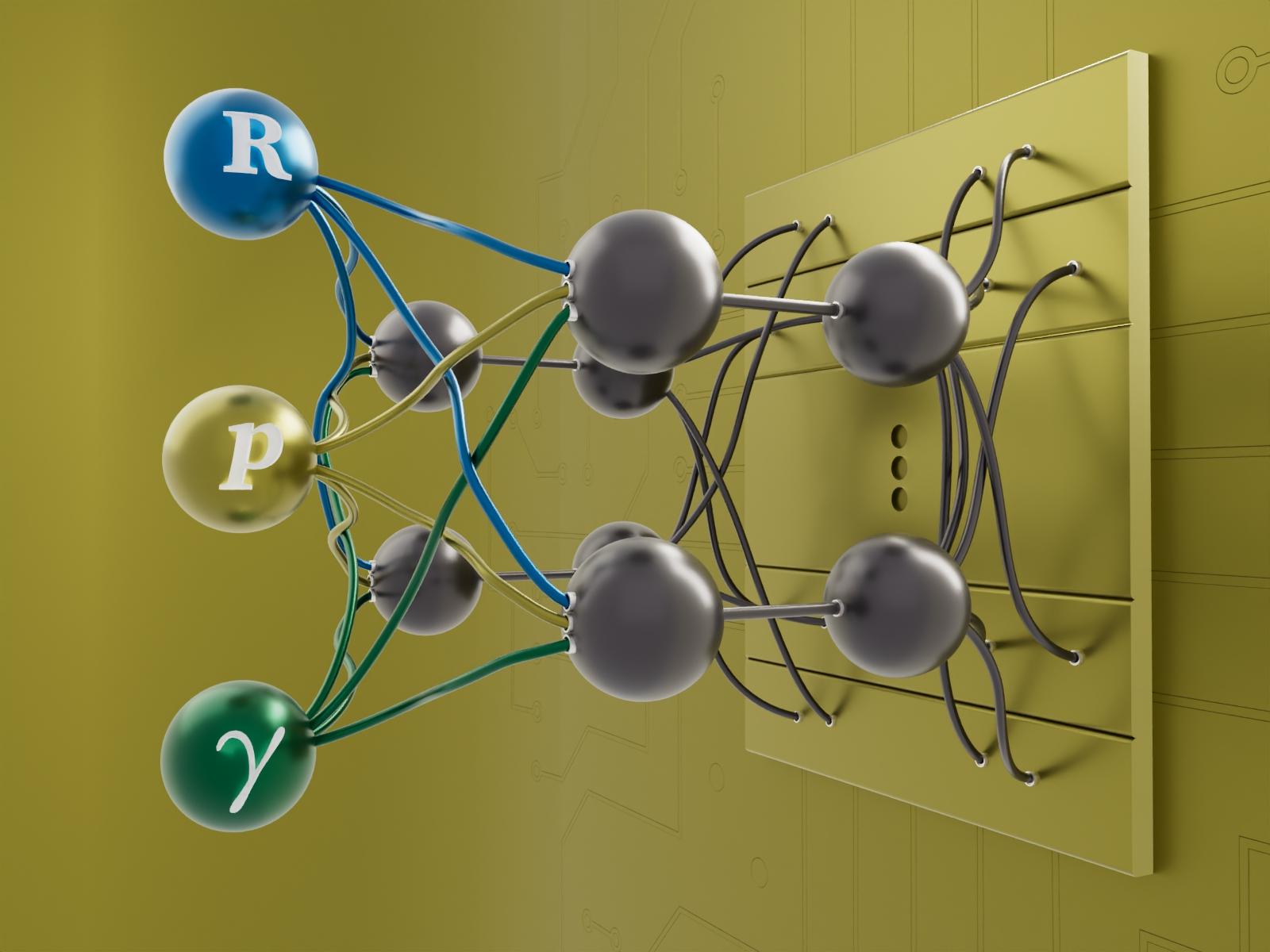Neural Networks for Evaluating Effective Interactions
Neural networks techniques enable the efficient capture of electron correlation effects in reduced-dimensionality spaces

The VNet neural network can be used to rapidly generate downfolded Hamiltonians that capture electron correlation effects in small dimensionality spaces.
(Image by Ben Watson | Pacific Northwest National Laboratory)
The Science
Accurately describing the properties of challenging problems in physical sciences requires complex mathematical models that are impractical to tackle head-on. Developing reduced-dimensionality representations that encapsulate complex correlation effects in many-body systems is crucial to understanding these complicated problems, which can still be associated with a significant computational overhead. To address this challenge, researchers combined a framework that integrates recent advances in developing active-space representations of coupled cluster downfolded Hamiltonians with neural network approaches. The neural network (NN)-based algorithm (VNet) can be trained for rapidly evaluating the many-body form of effective/downfolded Hamiltonians in chemically relevant active spaces.
The Impact
NNs can be trained to eliminate the computationally expensive steps required for evaluating hundreds or thousands of Hugenholtz diagrams, which correspond to multidimensional tensor contractions necessary for evaluating a many-body form of downfolded Hamiltonians. The NN VNet infrastructure combines recent advances in coupled cluster theory and machine learning methods to provide numerically inexpensive interaction-driven models in small-dimensionality active spaces for chemistry applications.
Summary
Accurately describing challenging physical science problems requires using complex mathematical models that are unmanageable to tackle directly. Understanding these challenges requires developing simpler representations that include the complex correlation effects in many-body systems. However, numerically evaluating these models can still be computationally costly.
Using small molecular systems (the H2O and HF molecules) as examples, the team demonstrated that training NNs employing effective Hamiltonians for a few nuclear geometries of molecules can accurately interpolate/extrapolate their forms to other geometrical configurations characterized by different intensities of correlation effects. The team also discussed differences between effective interactions that define coupled cluster downfolded Hamiltonians and those of bare Hamiltonians defined by Coulomb interactions in the active spaces, which can effectively reduce the parameter space used in machine learning models. The VNet model allows for the rapid prediction of effective interactions, which play a critical role in describing ground-state potential energy surfaces in bond-breaking (forming) processes and searching for local minima, transition states, energy barriers, and the dynamics of chemical systems. It was demonstrated that VNet can efficiently reproduce the exact form of effective Hamiltonians for variety of chemical situations involving strong correlation effects.
Contact
Karol Kowalski, Pacific Northwest National Laboratory, karol.kowalski@pnnl.gov
Funding
This material is based upon work supported by the “Transferring exascale computational chemistry to cloud computing environment and emerging hardware technologies (TEC4)” project, which is funded by the Department of Energy (DOE), Office of Science (SC), Basic Energy Sciences program, the Division of Chemical Sciences, Geosciences, and Biosciences (under FWP 82037). N.P.B. also acknowledges support from the Laboratory Directed Research and Development program at Pacific Northwest National Laboratory. This work is also supported by the DOE SC Advanced Scientific Computing Research program and Basic Energy Science program, Scientific Discovery through Advanced Computing program under Contract No. DE-AC02-05CH11231. (S.L. and C.Y.) This work used the computational resources of the National Energy Research Scientific Computing center under NERSC Award ASCR-ERCAP m1027 for 2024, which is supported by DOE SC under Contract No. DE-AC02-05CH11231.
Published: June 2, 2025
Liang, S., K. Kowalski, C. Yang, and N. P. Bauman. 2024. “Effective many-body interactions in reduced-dimensionality spaces through neural network models.” Phys. Rev. Res. 6, 043287. [DOI: 10.1103/PhysRevResearch.6.043287]